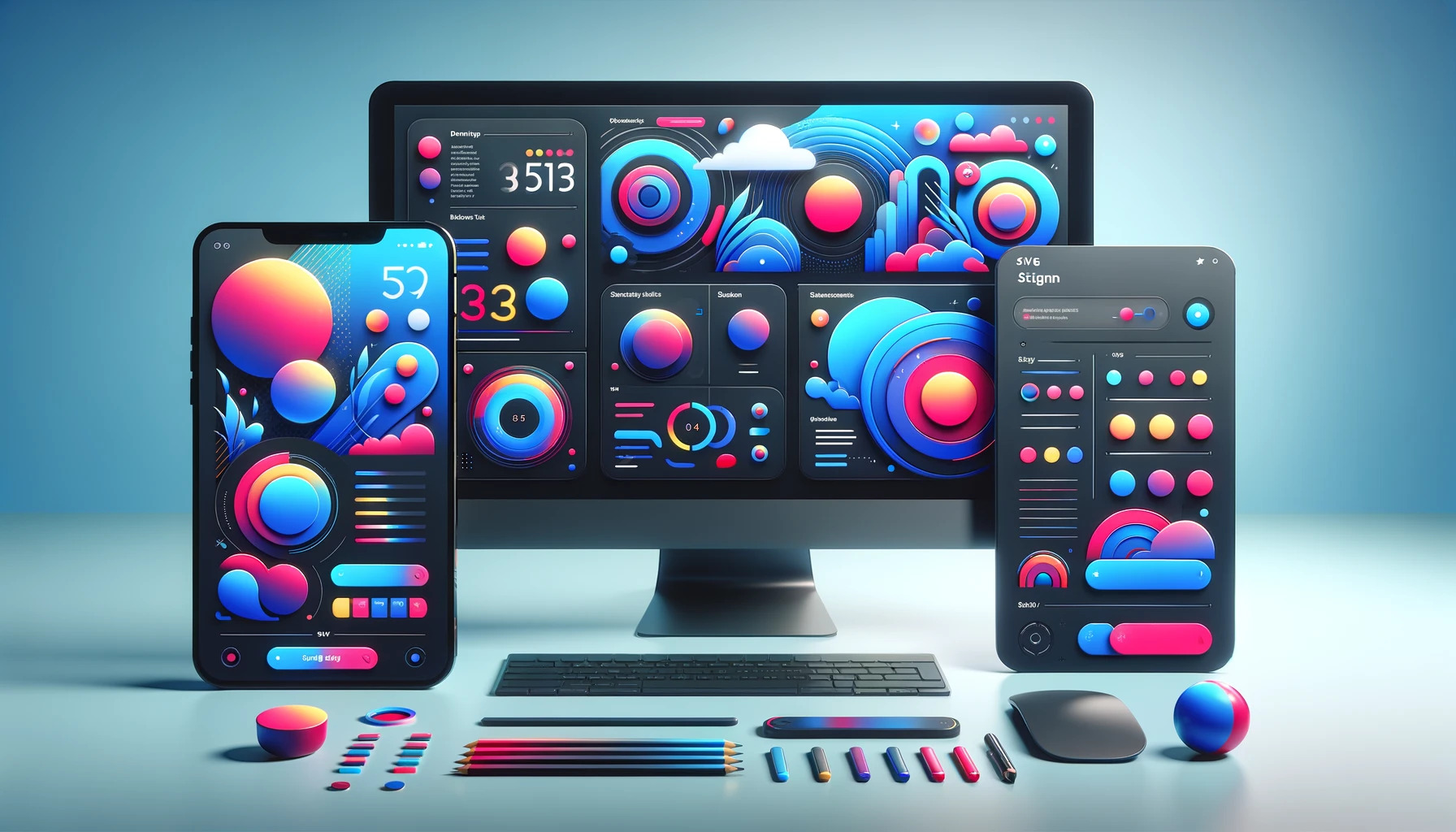Designing User Interfaces with SVG: Insights and Tips
By George
Published April 1, 2024
 Designing User Interfaces with SVG: Insights and Tips
Designing User Interfaces with SVG: Insights and Tips
In digital design, Scalable Vector Graphics (SVG) have revolutionized the way we think about crafting user interfaces. The unique capabilities of SVG, including scalability, flexibility, and interactivity, make it an unparalleled choice for designers aiming to elevate user experience. This article delves into practical insights and tips to harness the power of SVG in UI design, ensuring every element not only serves its purpose but also enhances the overall interface aesthetics and functionality.
The Essence of SVG in UI Design
SVG thrives in the modern web ecosystem, bringing crisp, scalable graphics that adjust flawlessly across devices without losing quality. This characteristic is crucial for creating responsive designs that cater to a wide range of screen sizes and resolutions. By incorporating SVG into your UI toolkit, you're not just designing; you're engineering an adaptable and visually appealing experience for every user.
To fully harness SVG in UI design, it's essential to adhere to core SVG design principles. These principles guide the use of SVG to create interfaces that are not only visually appealing but also highly functional and user-friendly. By focusing on simplicity, scalability, and semantic structuring, designers can ensure their SVG assets contribute positively to the overall user experience, maintaining a balance between aesthetic value and performance efficiency.
Crafting Icons and Logos
Icons and logos are the quintessential representatives of brand and functionality within a UI. SVG, with its vector nature, ensures that these crucial elements remain pixel-perfect at any scale, from tiny mobile screens to expansive desktop displays. To maximize the impact of SVG icons and logos:
- Customize and animate: Utilize CSS and JavaScript to introduce subtle animations or changes in color on hover, making the UI feel dynamic and interactive.
- Optimize: Leverage tools to minimize file size without compromising quality, ensuring swift load times.
Applying color theory in SVG design plays a pivotal role in creating visually cohesive and appealing UI elements. Through strategic use of color palettes and contrasts, designers can enhance the visual hierarchy, guide user attention, and evoke the desired emotional responses. SVG's versatility in color manipulation allows for dynamic theming and adaptability, ensuring that icons and logos align perfectly with the overall design language of the UI.
Implementing Complex Illustrations and Backgrounds
Beyond icons and logos, SVG excels in rendering complex illustrations and backgrounds. These elements can add depth and personality to your UI, making it stand out. However, complexity demands careful handling:
- Balance detail and performance: Too much complexity can hinder performance. Aim for a harmonious balance where illustrations enhance rather than detract from the user experience.
- Responsive design: Use CSS and SVG's inherent capabilities to ensure illustrations adapt to different screen sizes, maintaining the design's integrity without manual adjustments for every possible device.
Enhancing Accessibility
Accessibility is a cornerstone of effective UI design. SVG offers unique advantages in making visual elements more accessible:
- Text within SVG: Unlike images, text elements within SVGs are selectable and resizable, improving accessibility for users with visual impairments.
- ARIA labels: Incorporate ARIA (Accessible Rich Internet Applications) labels to provide context for screen readers, ensuring that all users can navigate and interact with your UI effectively.
SVG typography offers a unique avenue for enhancing UI design through the use of vector-based text that scales flawlessly across devices. By integrating SVG typography into your designs, you gain control over text appearance, ensuring readability and aesthetic harmony. This approach not only improves accessibility but also opens up creative possibilities for text effects and animations that remain crisp and clear at any size.
Interactive Data Visualization
SVG shines in the domain of interactive data visualizations. Its ability to dynamically update and animate makes it ideal for displaying complex data in an accessible and engaging manner. For designers venturing into data visualization:
- Leverage libraries: Utilize JavaScript libraries designed for SVG manipulation to simplify the creation of graphs, charts, and interactive elements.
- Focus on usability: Ensure visualizations are not just visually appealing but also intuitive to interact with, providing users with a seamless experience as they explore data.
Performance Optimization
While SVG offers numerous benefits, performance optimization is key to harnessing its full potential. Efficiently utilizing SVG ensures your UI remains responsive and engaging:
- File size matters: Use tools to clean up and compress SVG files, removing unnecessary metadata and reducing file size without affecting quality.
- CSS and JS wisely: External CSS and JavaScript can enhance SVG, but excessive use can impact performance. Balance is crucial; ensure animations and interactions are justified by the value they add.
Seamless Integration with HTML and CSS
SVG's flexibility extends to its compatibility with HTML and CSS, offering designers creative freedom in integration and styling:
- Inline SVG: Directly embedding SVG code within HTML facilitates direct styling with CSS, opening up endless possibilities for customization.
- CSS Variables: Utilize CSS variables within SVG for dynamic theming and styling, allowing SVG elements to adapt to different themes or user preferences seamlessly.
Conclusion
SVG stands at the forefront of modern UI design, offering unparalleled advantages in scalability, interactivity, and aesthetic flexibility. By embracing SVG, designers are equipped to create responsive, accessible, and visually stunning interfaces that cater to the diverse needs of users across the digital spectrum. Whether it's crafting intricate illustrations, designing dynamic data visualizations, or optimizing for performance, SVG offers the tools to elevate your UI design to new heights. Remember, the key to effectively using SVG lies not just in understanding its capabilities but in creatively applying them to solve design challenges and enhance user experiences. With the insights and tips provided, you're well on your way to mastering the art of designing user interfaces with SVG.